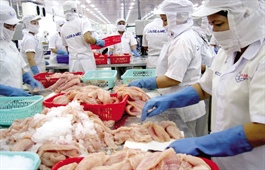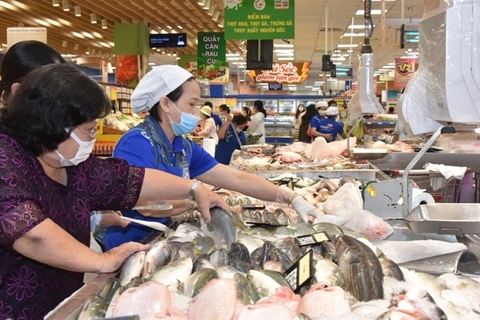Vietnam’s agro-forestry-fishery exports hit all-time high
Vietnam’s agro-forestry-fishery exports hit all-time high
The administration of Vietnam’s agriculture sector removed trade barriers and accessed many markets in 2022, paving the way for the agro-forestry-fishery export revenue to reach a new record of US$53.22 billion, according to the Ministry of Agriculture and Rural Development.

The figure rose 9.3 percent over last year.
Of the total, key agricultural product exports fetched $22.59 billion, forestry products $16.93 billion, and seafood $10.92 billion.
Meanwhile, husbandry exports fell 7.1 percent to $400 million.
The sector had 11 commodities whose export value surpassed $1 billion each, with seven of them reporting an export turnover of over $3 billion each, including wood and wooden products ($10.92 billion), shrimp ($4.33 billion), coffee ($3.94 billion), rice ($3.49 billion), rubber ($3.31 billion), vegetables and fruits ($3.34 billion), and cashew nuts ($3.07 billion).
The agro-forestry-fishery sector posted an estimated trade surplus of $8.5 billion this year, rising 30 percent year on year.
To obtain these achievements, the sector has employed safe, flexible and creative adaptation solutions, and changed its mindset to overcome difficulties and challenges during the actual production and business.
The sector has also enhanced the research, forecast, and provision of the information about markets to promptly orient the production and consumption of agricultural products.
In addition, trade remedies have been applied in line with international commitments. The sector has also supported enterprises in resolving trade disputes and reduced risks in international integration.
As a result, markets for local products are expanded.
Furthermore, local agencies have negotiated and completed procedures to export mangoes and chicken to South Korea; pomelos and limes to New Zealand; feather, bird's nests, and bird's nest-based products, milk and dairy products, durians, and sweet potatoes to China; and honey to the European Union.
They have also surveyed grapefruit farming areas and factories to early export this kind of fruit to the U.S.
























